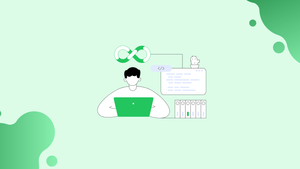Continuous Integration (CI) in DevOps is a software development practice, wherein isolated updates to a code base by developers are immediately tested and reported. CI aims at early detection of bugs in code or defects in software functionality. The entire process works in conjugation with automated testing tools that ascertain Continuous Testing (CT) and Continuous Deployment (CD) of the software.
Even in iterative development approaches like Agile, a daily build is standard. Such an approach for software development does not offer benefits like constant feedback on product status, repetitive manual testing, generating deployable code etc. With CI, the defects in the product code are detected at an earlier stage and thus, they are usually less complex, smaller, and therefore easier to resolve. Here are a few benefits that CI offers to the product development cycle.
1. Continuous Integration Reduces Risks
By integrating multiple times a day, the risks involved in a project can be minimized. Detecting defects in the product at an early stage, measuring the product health, having better visibility of the project are some of the benefits that CI renders. CI objects to reduce the risk that a faulty code may introduce to the product.
- Detect and Fix Bugs, Sooner: One of the most highlighted and appreciated advantages of CI is it facilitates finding defects in the code when they are introduced. With multiple tests and inspections done in a day, any flaw in the code base can be checked, without waiting for late-cycle testing that induces functioning defects in the software.
- Test Product Quality and Ability: Since CI involves automated testing and scrutinizing the code base multiple times, it allows testing the product for attributes like the complexity of the code, lines of code that may affect other features and functionalities in future etc.
2. CI Offers Ready-to-Market Output
How about having a product source code updated continuously so that you have a product to take to the market. CI enables integrating changes to the source code of the product and if there is any fault in the code that’s being introduced, it can be fixed immediately. With such fixes done on time, CI makes a deployable product available. If CI is not followed, it may result in delayed product release, invite new defects as the code starts and grow and integrates with a new line of code, which can, therefore, give an unexpected turn to the project.
3. Continuous Integration provides Project Visibility and Tracking
With CI, there is better visibility of the project status and health. This give stakeholders and developers room to bring in improvements. Since integrations occur more frequent than in the traditional development approach, it informs about the overall health of the project, its status updates (which may involve its success or failure rate), and other significant info that showcases the project possibilities.
Set-up CI Environment for your Product Development Project
Continuous Integration ensures that while software development is in the process, the coding and design standards are met. With frequent integrations, the team involved in the project stay updated about the changes or updates in the code.
CI involves automation in processes, which involves integrated functioning of tools, CD, and CT concepts.


